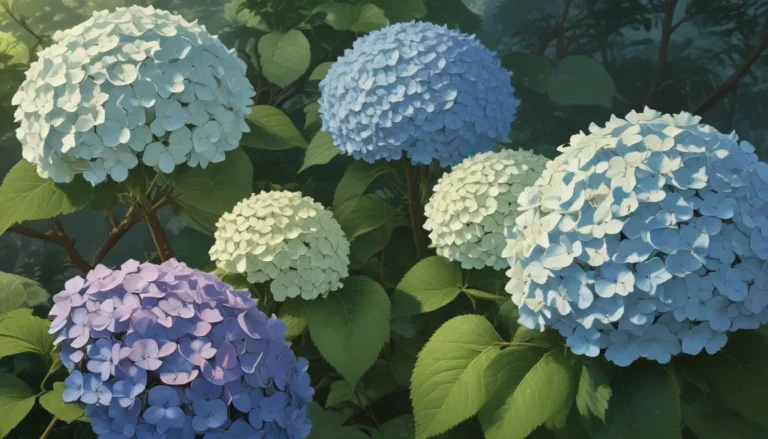Mastering Monstera Propagation

Monstera deliciosa, also known as Swiss Cheese Plant, is a beloved houseplant among many enthusiasts. Its unique foliage and easy propagation make it a favorite for both beginners and experienced gardeners alike. In this comprehensive guide, we will explore various methods to propagate Monstera plants, from rooting cuttings in water to division, air layering, and even sowing seeds. Whether you are looking to expand your Monstera collection or share the joy of growing with others, mastering Monstera propagation can be a rewarding experience.
The Best Potting Mixture
When propagating Monstera plants, it is essential to use a well-draining potting mixture to mimic their natural habitat. Swiss Cheese Plants are epiphytes, meaning they grow in the air, requiring ample airflow around their roots. A recommended potting mixture consists of 50% potting soil, 25% orchid bark, and 25% perlite. This mixture provides the necessary aeration and helps prevent root rot, a common issue with Monstera plants, especially variegated varieties. Additionally, adding rice hulls and worm castings can further enhance the potting mixture’s quality, promoting healthy growth in your propagated plants.
Rooting Cuttings in Water
Rooting cuttings in water is one of the simplest and most popular methods for propagating Monstera plants. To begin, select a stem with a node and leaf attached. Cut the stem about half an inch below the node and place it in a glass of water. Ensure that the leaf stays dry while the stem is submerged. Position the cutting in a location with dappled or bright, indirect sunlight and change the water every few days. Within weeks, you should observe roots starting to emerge. Once the roots are several inches long, plant the cutting in a small container filled with the recommended potting mixture.
Steps for Rooting Cuttings in Water:
- Select a stem with a node and leaf attached.
- Cut the stem below the node and place it in water.
- Change the water every few days.
- Plant the cutting in a small container once roots emerge.
Rooting Cuttings in Soil
Another effective method for propagating Monstera plants is rooting cuttings directly in soil. Start by filling a container with the recommended potting mixture and selecting a stem with a node and leaf attached. Cut the stem below the node and plant it in the soil. Keep the soil moist and place the container in an area with bright indirect light. Within a month, the cutting should develop roots, indicating successful propagation. Consider using clear plastic orchid pots for better drainage and root observation during the process.
Steps for Rooting Cuttings in Soil:
- Fill a container with the potting mixture.
- Select a stem with a node and leaf attached.
- Plant the cutting in the soil and keep it moist.
- Monitor root development and adjust watering as needed.
Division
Dividing Monstera plants is an excellent method to control their size and create new additions for your indoor garden. To divide a plant, prepare by watering it well the day before. Carefully remove the plant from its container and separate the roots into two sections. Use a clean knife or scissors to cut the sections apart, transplanting them into separate containers of the same size. Avoid using large pots initially to prevent waterlogging and promote healthy growth in the divided plants.
Steps for Division:
- Water the plant well before dividing.
- Separate the roots into two sections.
- Cut the sections apart using a clean tool.
- Transplant each section into a separate container of the same size.
Air Layering
Air layering is a convenient propagation method that utilizes the aerial roots naturally developed by Monstera plants. Begin by identifying a large leaf with a nearby node for air layering. Create a small notch in the stem internode and wrap moist sphagnum moss around it, securing the moss with plastic and string. Keep the moss moist to encourage root formation, and after several weeks, roots should start to emerge. Once roots are visible, cut the rooted section and transplant it into a small container filled with the recommended potting mixture.
Steps for Air Layering:
- Identify a large leaf with a nearby node.
- Make a small notch in the stem internode.
- Wrap moist sphagnum moss around the notch and secure with plastic.
- Maintain moisture to stimulate root growth.
Sowing Seeds
While propagating Monstera plants from seeds is less common, it is still an option for enthusiasts. Keep in mind that variegated plants cannot be grown from seed due to genetic mutations. To sow Monstera seeds, moisten paper towels and lay them in a bright, well-ventilated area. Lay the seeds on the paper towels and cover them with another layer of moist paper towels. Ensure the paper towels remain moist, and after a few days, the seeds should sprout. Plant the sprouted seeds in small containers filled with the recommended potting mixture and provide proper care to foster healthy growth in the new plants.
Steps for Sowing Seeds:
- Moisten paper towels and lay them in a bright area.
- Place seeds on the paper towels and cover with another layer.
- Ensure moisture to stimulate seed sprouting.
- Plant sprouted seeds in small containers using the recommended potting mixture.
Growing Monstera plants through propagation can be a fulfilling experience, offering a sense of accomplishment and connection with nature. Whether you choose to root cuttings in water, soil, divide existing plants, air layer, or sow seeds, each method presents unique benefits and challenges. Experimenting with different propagation techniques can expand your gardening skills and deepen your appreciation for these beautiful plants.
Conclusion
In conclusion, mastering Monstera propagation opens up a world of possibilities for plant enthusiasts. By utilizing various methods such as rooting cuttings in water or soil, dividing plants, air layering, and sowing seeds, you can expand your Monstera collection and share the joy of growing with others. Remember to use a well-draining potting mixture, provide adequate light and moisture, and practice patience throughout the propagation process. Whether you are a novice gardener or a seasoned plant parent, propagating Monstera plants allows you to cultivate a thriving indoor jungle and reap the rewards of your green thumb efforts. Share your propagation journey and gardening tips in the comments below!
Incorporating these methods into Monstera care routines can yield successful propagation results and enrich the indoor gardening experience. Experimenting with propagation techniques allows plant enthusiasts to explore new avenues of growth and share the joy of plant parenthood with others. Let’s continue to nurture our Monstera plants and watch them flourish in our homes. Happy propagating!





